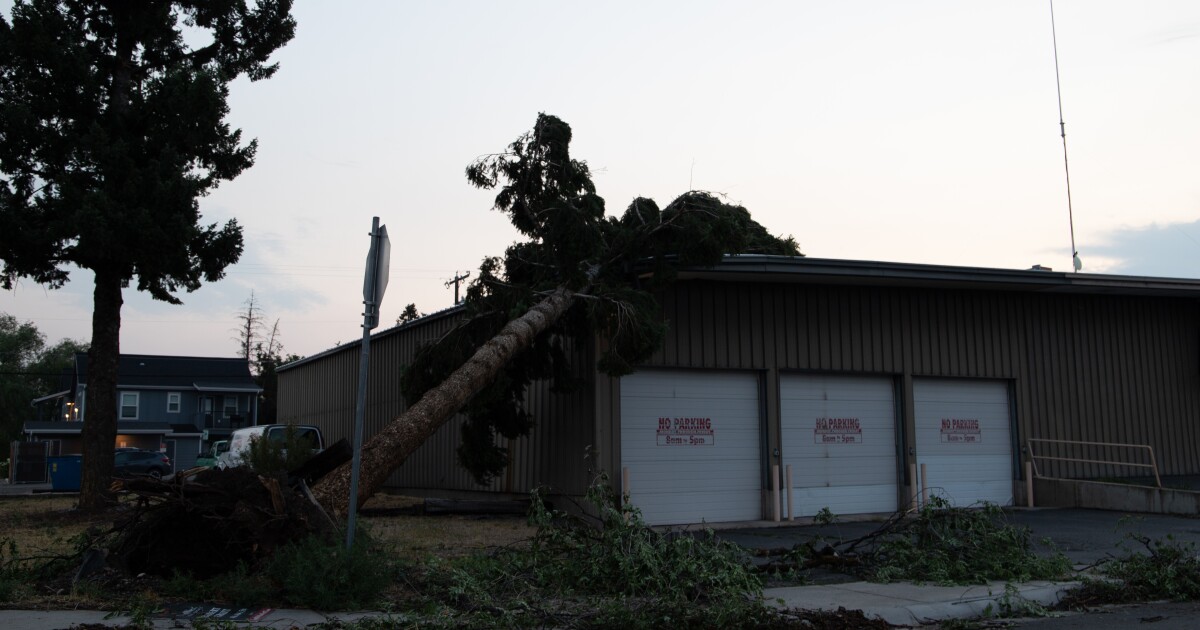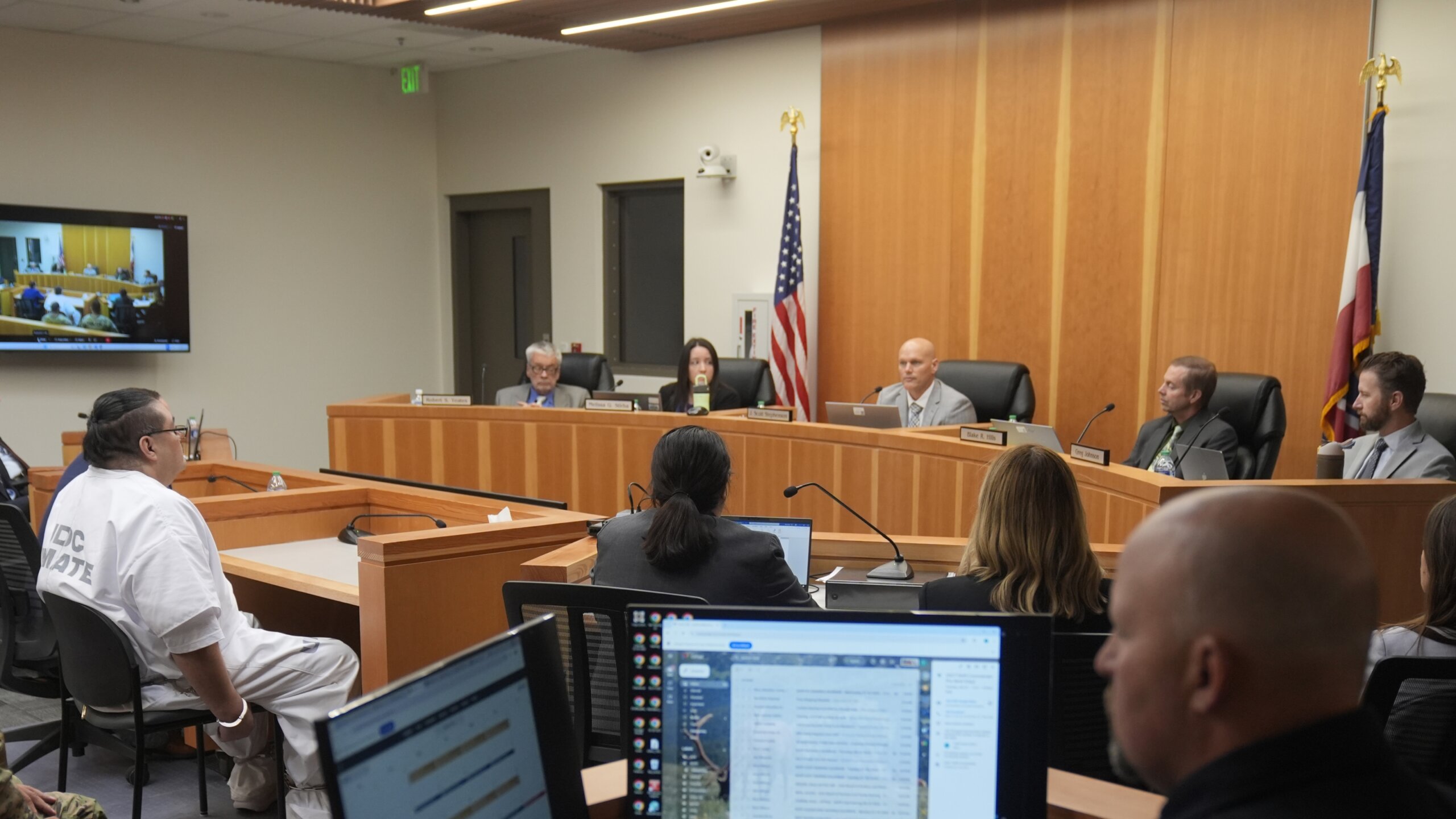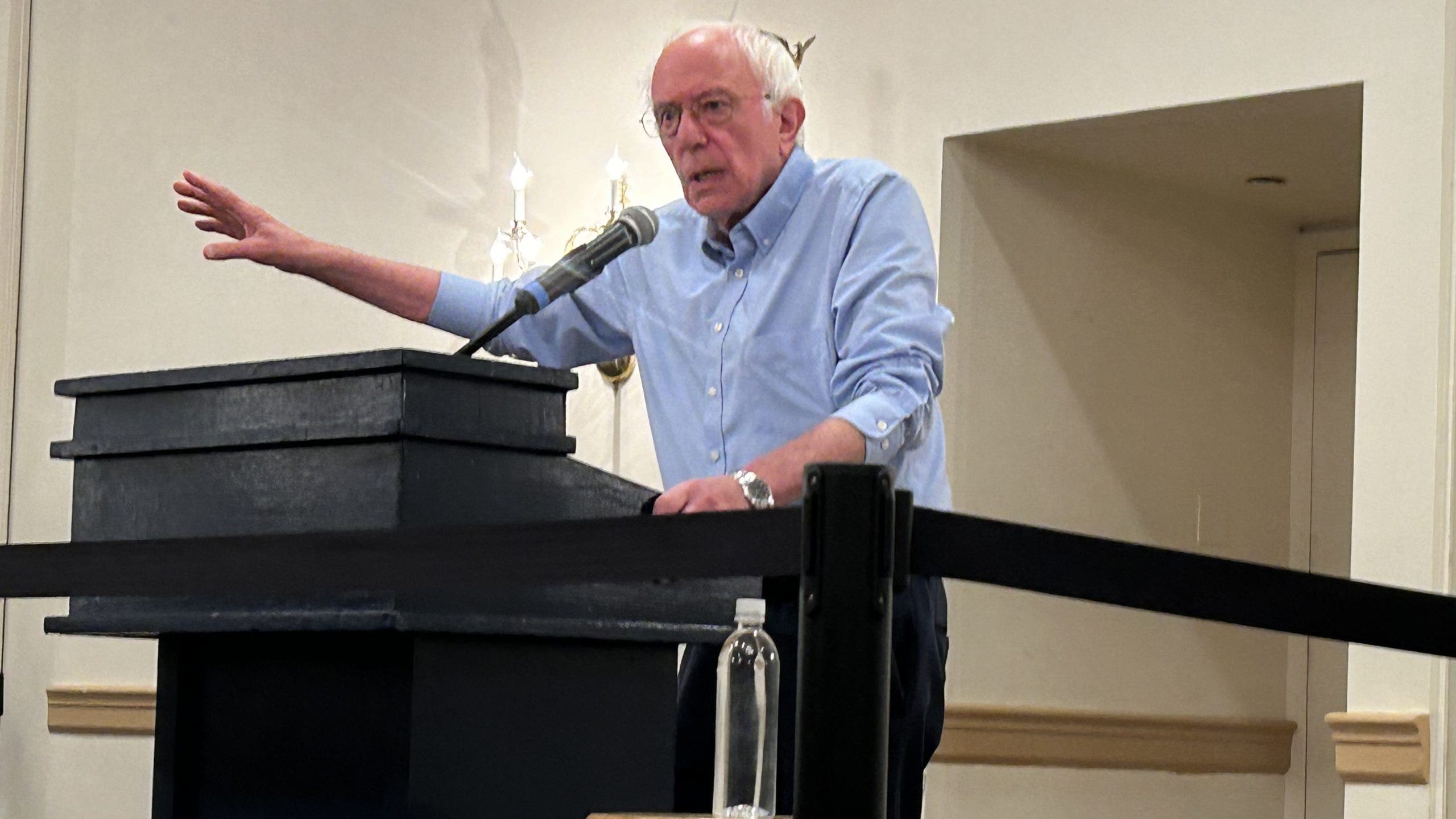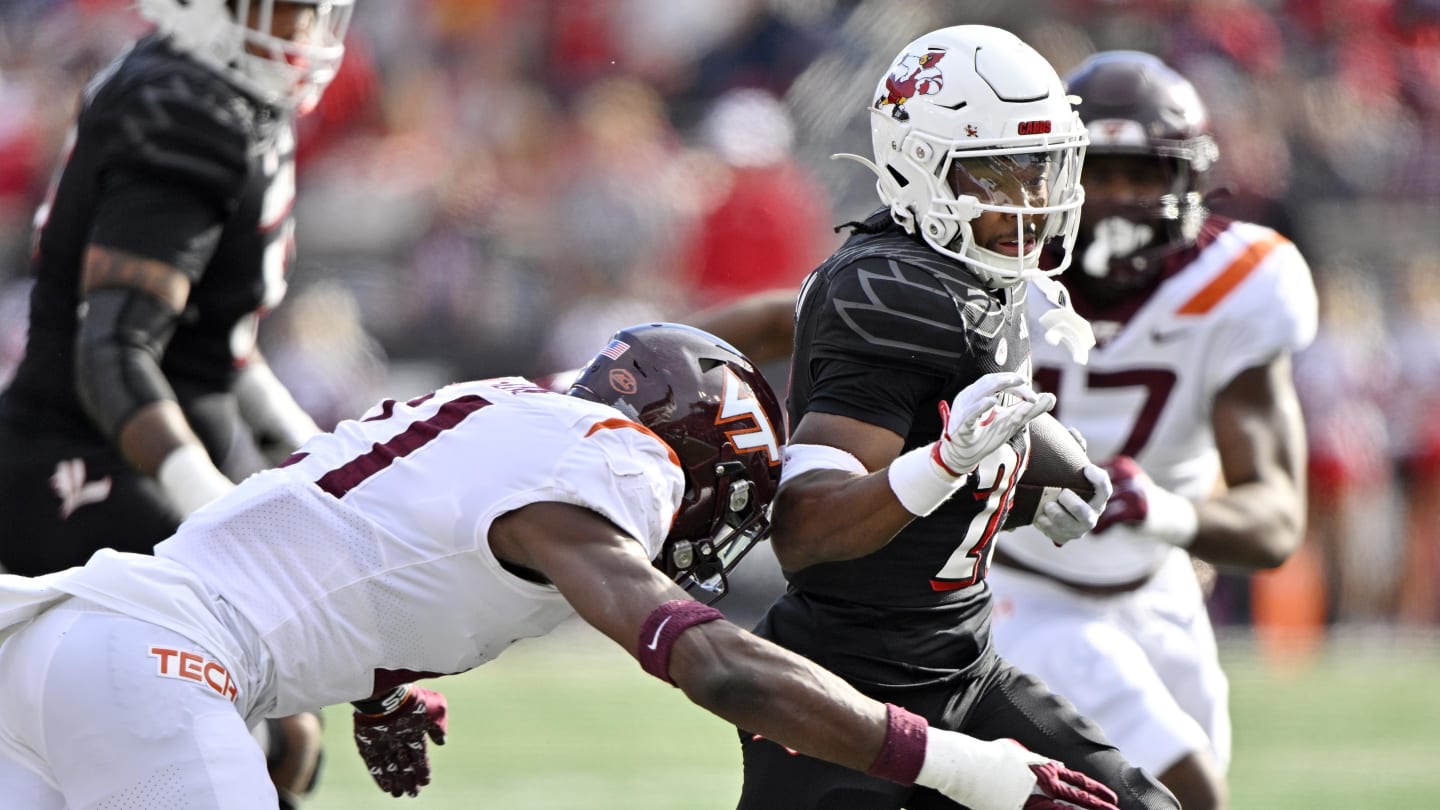Montana
Seeking to Silo in Montana – FLYING Magazine

Montana’s Flathead Valley is a widely acclaimed summer and winter destination, known for its pristine clear water lakes, ski resorts, and—most notably—Glacier National Park.
The Silo House fly-in rental in Kalispell is conveniently situated near the area’s attractions but benefits from its tranquil location at Sky Ranch Airport (MT95). The increasingly popular accommodation is owned by Tom Bass and Susan Jasmann, longtime residents of the area who individually share a passion for aviation and horses.
“We opened the Silo House four years ago,” Bass said. “Two months later, COVID hit and every reservation was canceled. We thought we were going to go broke but actually did quite well during the pandemic because of what you can do here.

“Montana’s number one economic source is recreation, and people flock here because of all the things to do. People that stay at the Silo House for a week spend two or three days at Glacier [National] Park and the rest with all the activities Flathead Valley has to offer. There are places to ride horses, fly fish, hike, float the rivers, zip lines, rent RVs or boats, and many other things. Flathead Lake, which is only 2 miles from the Silo House, is 50 miles long and is about 6 miles wide on average.”
The fly-in rental features a unique architectural style. It is a memorable starting point for a pilot’s adventures in northwest Montana.
“One of the four lots we own was the original farmhouse for the section of land that MT95 is built on,” Bass said. “The farmhouse was 100 years old, and we took it down to the studs and doubled its size. The farmer’s original grain bins on the lot needed to be repurposed and the Silo House was born. All of the exterior is rock, barnwood, and silos. The interior is industrial modern with dramatic steel beams, lots of glass, stunning views, and custom wood furniture. With the patio, an acre of grass, and stunning views: This is the place you want to come home to at the end of the day. The initial goal of the house from day one was to be designed from the ground up as a vacation rental.”
The project’s website provides an overview of its amenities.


“The Silo House has an open floor plan with plenty of room to entertain, with windows overlooking a wetlands pond and the dramatic Rocky Mountains,” he said. “There are two large bedrooms with comfy king-size beds, a round loft with three twins (for kids or adults), two bathrooms, and private study with a twin which is in the silo over the master bedroom. A round fully stocked kitchen is a phenomenal place to cook, and there is a stunning bar area. The beautiful rustic wood kitchen table comfortably seats 10.
“You can enjoy your cup of coffee in front of the fireplace or out on the beautifully appointed patio, which has an outdoor bar area and fire pit for both summer and winter nights. Also, bring your binoculars for sightings of all sorts of animal life, bird watching, and horses in the pasture next door.”
Bass contends that the unique project has continued to be successful, post-pandemic, for several reasons. More than anything, having a rental home with direct runway access is a rarity in northwest Montana. Pilots have taken notice of the ease of taxiing to their accommodation.
As a point of reference, Kalispell City Airport (S27) is 6 nm northwest, and Glacier Park International (KGPI) is 12 nm to the north of Sky Ranch Airport. When you land at the Silo House, your hosts will take you to one of several car rental locations and help with your luggage.
Bass, a Cessna 180 owner, offered an overview of some of the notable airstrips in the area. He is happy to help curate a list of “must-sees” for pilots visiting, both on land and the water. He has been to Alaska 15 times on floats and frequented many of the Idaho backcountry strips. If you need help in planning your dream flying adventure, he will be there to help you.
“I am familiar with all of the local runways around here, including backcountry runways,” he said. “There are four backcountry runways less than 40 miles away that all have great camping locations. Three of them—Schafer, Meadow Creek, and Spotted Bear—are a few hundred feet away from spectacular fly fishing spots. Flights over the mountains in this area will give you breathtaking views.
- Spotted Bear (8U4) – 27 miles; 3,672 feet msl; 3,800-foot runway
- Meadow Creek (0S1) – 35 miles; 3,993 feet msl; 2,800-foot runway
- Schafer (8U2) – 38 miles; 4,854 feet msl; 3,200-foot runway
- Ryan Field (2MT1) – 23 miles; 3,660 feet msl; 2,500-foot runway


“These backcountry strips are all in the mountains and should only be attempted by pilots with mountain flying experience. For those that are not seasoned backcountry pilots, there are instructors around here that seriously know what they are doing. They know what they’re doing because daily they help a lot of people who are flown into these strips as a place to start their hikes.”


The well-manicured grass runway at Sky Ranch Airport is much less intimidating to the visiting pilot, sitting at an estimated 2,905 feet msl. According to Bass, 100LL fuel is typically available for guests so that they don’t have to fly to another airport to fill up.
“MT95 is the biggest grass strip in Montana,” he said. “It’s 5,000 feet long and 220 feet wide, but we have designated a 50-foot taxiway on each side. There are no obstacles, so it is easy to get in and out of.”

Montana
Unemployment claims in Montana declined last week

Initial filings for unemployment benefits in Montana dropped last week compared with the week prior, the U.S. Department of Labor said Thursday.
New jobless claims, a proxy for layoffs, fell to 403 in the week ending July 20, down from 447 the week before, the Labor Department said.
U.S. unemployment claims dropped to 235,000 last week, down 10,000 claims from 245,000 the week prior on a seasonally adjusted basis.
Texas saw the largest percentage increase in weekly claims, with claims jumping by 24.9%. Kansas, meanwhile, saw the largest percentage drop in new claims, with claims dropping by 68.7%.
The USA TODAY Network is publishing localized versions of this story on its news sites across the country, generated with data from the U.S. Department of Labor’s weekly unemployment insurance claims report.
Montana
Renowned food safety lawyer discusses E. coli outbreak in Flathead County

KALISPELL — We’re following up on the E. coli outbreak in Flathead County that has left one person dead and at least 12 others infected.
The Flathead City-County Health Department (FCCHD) and Montana Department of Public Health and Human Services (DPHHS) are investigating the outbreak with preliminary investigations showing ground beef as the potential source.
Public health officials told MTN News that the investigation is ongoing and the names of the beef distributor and restaurants where the beef was sold will not be released at this time.
Renowned food safety lawyer Bill Marler represented families sickened from ground beef linked E. coli during the historic 1993 Jack-in-the-Box outbreak, which left nearly 700 people sick and caused the death of four children.
Marler says those infected through this E. coli outbreak have a right to seek compensation.
“Both from the restaurant for under-cooking but from my perspective also from the meat supplier and the slaughterhouse that put the contaminated food into the marketplace, in 2024 after you know 30-plus years, post Jack-in-the-Box, that shouldn’t happen,” said Marler.
Marler said full transparency between public health officials investigating the ground beef E. coli outbreak and the Flathead community is key as the investigation continues.
“The only reason that we have ill people at those restaurants with E. coli O157 from hamburger is that those hamburgers were not cooked properly,” said Marler.
“If you cook it to the standards that every state you know follows, which is 155 degrees, that kills E. coli, and so it’s a little odd that they haven’t named the restaurants, it’s frankly really bothersome that they haven’t named the supplier.”
Marler and his firm Marler-Clark have represented thousands of food poisoning victims over the last three decades.
He said cases linked to ground beef E. coli outbreaks are usually under-reported in the community, as symptoms vary from person to person.
“Every one person counted, there’s usually about 5-10 other people that go uncounted,” added Marler.
Jossolyn Becker with the Flathead City-County Health Department said the ground beef linked to E. coli has been removed with no threat of further contamination in the community.
She said the last known date of consumption of the product was on July 14.
“Any of the lot that was affected by this beef distributor has been isolated and it is no longer a concern at this point,” said Becker.
In a joint response to MTN News FCCHD and DPHHS – released the following:
“The investigation is ongoing and at this point in time we are unable to provide the name of the distributor or the names of the restaurants. We are planning to release a joint statement with DPHHS tomorrow to provide the most updated information available regarding this outbreak.”
Montana
No 'Vikings' at this year's Montana State Fair

People from all over Montana come to Great Falls each year for the Montana State Fair, and often have one specific thing that they want to see while they’re here. For a lot of people, that’s the iconic Viking.
For those who have never heard of it – a Viking is essentially a big meatball that has been dipped in batter and deep-fried, and then served on a stick.
The Sons of Norway Lodsen Lodge posted on Facebook earlier this month that they will not be at the Montana State Fair this year.
This is due to new regulations requiring an automatic fire suppression system that they were not able to have installed and inspected in time.
The fire suppression system was made a requirement for Montana in May of this year, with the intent to keep fairgoers, staff, and vendors safe.
Due to the new regulations this year, the Viking booth will not be present at the Montana State Fair.
“It’s known as the Sons of Norway Viking booth, where we do our famous Vikings,” said Shannon Wilson, the food service manager for the Viking booth. “A lot of people have told me they come to the fair just for Vikings, so we were pretty distressed that we couldn’t get the fire suppression equipment that we needed to be able to, it was required as of May of this year, and all of the vendors are just overloaded with requests, so we couldn’t do this year, but we’ll definitely be back next year.”
While a majority of their funding comes from the proceeds made at their booth each year at the fair, they are not concerned from a financial standpoint and will continue business as usual, including their regular donations to non-profits and youth groups.
“It’s important to continue the Viking booth that does a lot for our organization. We raise funds to support nonprofits around town; we also support youth groups,” Wilson added.
Annual fairgoers took to Facebook with their sadness for having to miss out on the Sons of Norway’s famous Vikings this year, but they have continued to show support for the organization and are looking forward to next year’s state fair.
Sons Of Norway
“We are discussing [potentially] having Vikings as part of our December bake sale, so stay tuned, watch our Facebook page, and especially, you know, visit often because we have a lot of activities going on and we invite the community to join us,” said Wilson.
Although the Viking booth will be missed, there will still be plenty of things to do and see and enjoy while you’re at the Montana State Fair.
-

 World1 week ago
World1 week agoOne dead after car crashes into restaurant in Paris
-

 Midwest1 week ago
Midwest1 week agoMichigan rep posts video response to Stephen Colbert's joke about his RNC speech: 'Touché'
-

 News1 week ago
News1 week agoVideo: Young Republicans on Why Their Party Isn’t Reaching Gen Z (And What They Can Do About It)
-

 News1 week ago
News1 week agoIn Milwaukee, Black Voters Struggle to Find a Home With Either Party
-

 Politics1 week ago
Politics1 week agoFox News Politics: The Call is Coming from Inside the House
-

 News1 week ago
News1 week agoVideo: J.D. Vance Accepts Vice-Presidential Nomination
-

 Movie Reviews1 week ago
Movie Reviews1 week agoMovie Review: A new generation drives into the storm in rousing ‘Twisters’
-

 World1 week ago
World1 week agoTrump to take RNC stage for first speech since assassination attempt




















